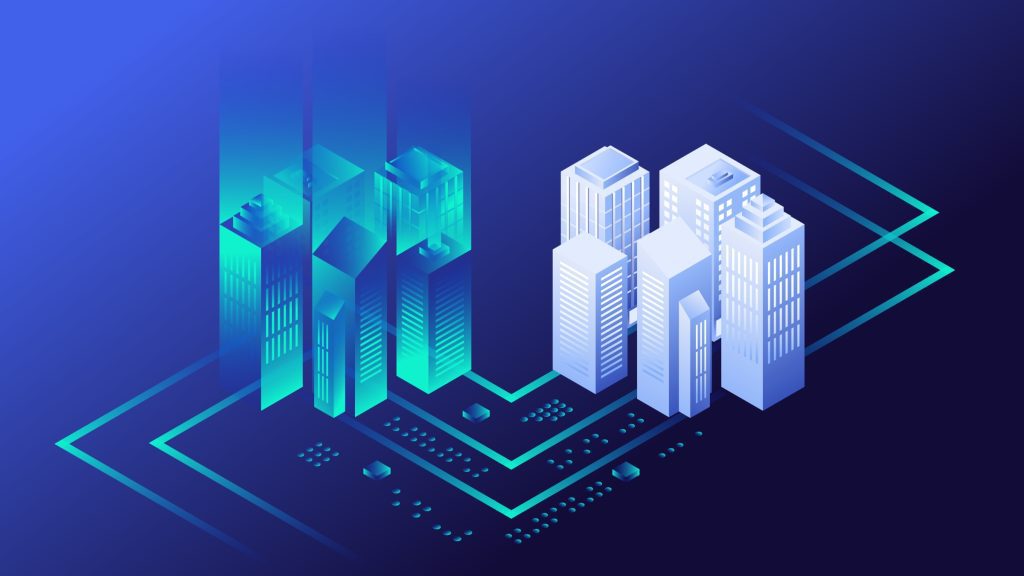
In 2025, digital twin is telecom will change how tower companies build, manage, and optimize networks. Through the process of turning static steel infrastructure into intelligent, data-driven assets, telcos are moving from physical infrastructure management to living information system management.
Such dynamic models power AI-driven network planning, predictive maintenance, and ultimately move competitive advantage from hardware ownership to data sovereignty.
Digital Twin Software Companies Offering Service to Telcos
Telecom towers used to be valued for how high they stood and the physical distance they covered. Today, their worth is increasingly tied to the quality of information they generate.
Enabled by drones, artificial intelligence, and 3D modeling, digital twin software companies offering telcos to create precise, current digital replicas of each site. The twins show all of the antennas, mounts, and cables, providing a constantly accurate image of the condition of the tower.
This digital twin in telecom shift is a revolutionary break with telecom operations. Instead of waiting stationary reports or performing occasional manual checks, engineers can now monitor tower health, upgrade planning, and structure simulations at their desks.
It’s not just efficiency; it’s foresight and precision. Any defect, misalignment, or asset discrepancy can be detected instantaneously with a digital twin, making decision-making smarter and safer.
Software like Bentley’s OpenTower iQ has become the pillar to this change. The ability to bring together drone-based reality models and AI-powered insights; these tools enable automatic detection of components and compare changes over time.
The result? Telcos have one version of the truth for all buildings in their portfolio.
Turning Towers into Dynamic Data Ecosystems
The newest generation of digital twin tower for cellular networks is transforming telecom asset management. With drone-enabled automated inspection, advanced analytics, and AI-driven insights, operators can now achieve predictive maintenance for telecom towers, avoiding costly downtime and human site visits.
AT&T’s Chief Operating Officer Jeff McElfresh highlighted this shift, revealing plans to build digital twins for every tower in the company’s footprint.
“We’re going to touch every cell site that we’ve got in AT&T’s footprint […] as AT&T does so, it will be creating digital twins of each site, using technologies, such as drones and artificial intelligence, in order to insure that it has the right network assets at the right locations and right height,” he said.
But real innovation lies beyond maintenance. Digital twin of an organization in telecommunications does not only include physical towers but business, operations, and customer information as well.
This one digital layer allows telcos to simulate upgrades, model coverage, and even predict future capacity needs ahead of time. These are two of the most exciting applications of digital twins for telecom, allowing companies to integrate engineering, business intelligence, and network strategy into one ecosystem.
Large scale, the digital twin for telecom is more than infrastructure; it is an adaptive intelligence system. Each tower’s information helps build a larger network model that optimizes spectrum use, energy use, and investment planning.
Operators can plan upgrades and expansion based on real network conditions rather than estimates or blueprints from years ago by having a digital twin for telecom.
Data Sovereignty and Competitive Intelligence
This data-centric approach is driving a profound change in how telecom network digital twin think about value and ownership. With cell tower infrastructure optimization now driven by algorithms, the true value really lies in controlling the stream of operational data, and not so much the assets themselves.
Combining IoT and digital twin technology for telcos takes this further by connecting towers to real-time environmental and network sensors.
This integration of physical and digital smarts makes autonomous monitoring possible, detecting temperature spikes, signal issues, or environmental hazards before they explode. At the same time, building information modeling (BIM) telecom infrastructure and digital twins puts design, maintenance, and compliance into the same room.
It also gives asset management performance metrics in telecommunications to the mainstream, so all the stakeholders, engineers, CFOs, and everyone in between, are looking at the same, real data.
Eventually, this infrastructure permits smart infrastructure management for telcos where data analytics and AI drive decisions from co-location revenue strategies to reporting sustainability. Towers are not static assets anymore; they’re data-driven assets that are adjusting in real time.
Eventually, digital twin in telecom is gradually converting towers into living data entities.
Their value is now no longer in machinery or height but in smartness, the unbroken flow of information that fuels AI models, informs network strategy, and provides enduring data sovereignty.
In an era where knowledge is the competition advantage, digital twins are making data, the new backhaul of telecommunications.
Inside Telecom provides you with an extensive list of content covering all aspects of the tech industry. Keep an eye on our Telecom sections to stay informed and up-to-date with our daily articles.